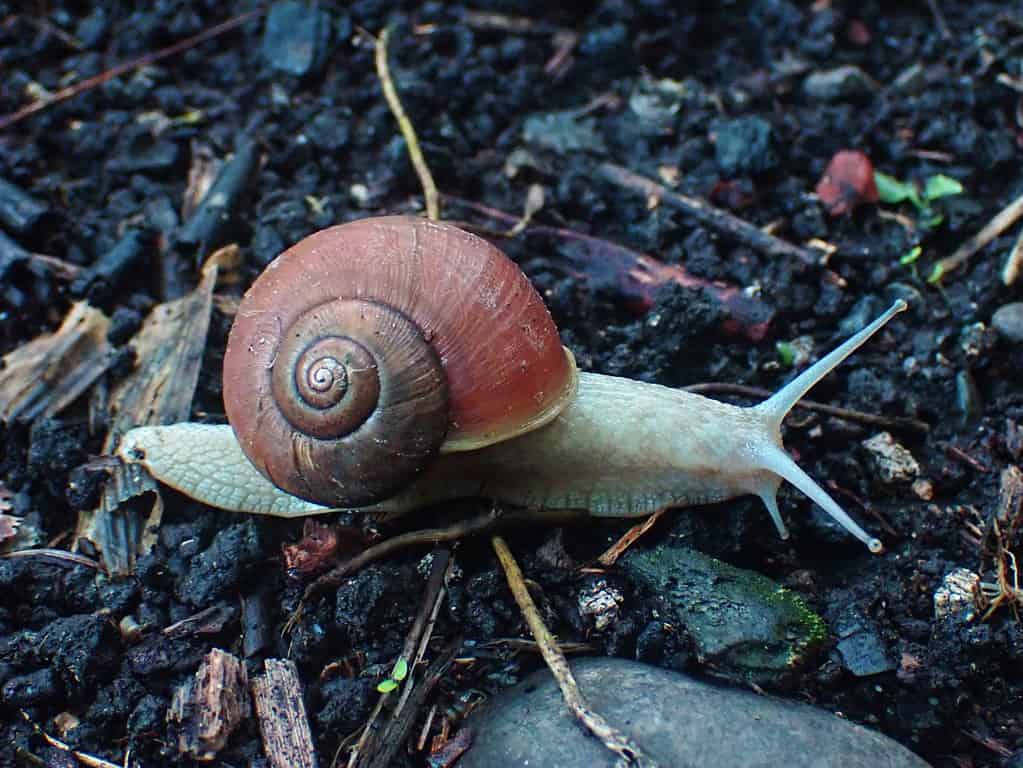If there’s one thing we usually associate snails with, it’s moving slowly. It’s not just the English language, most languages on Earth have some sort of “slow as a snail” idiom.
The snails’ slow movement can largely be attributed to the process they use to move — traveling by muscular contractions called pedal waves. However, there’s an exception to the rule. Researchers found a unique snail species that significantly increases its speed when feeling threatened.

A team of researchers from Kyoto and Hokkaido universities explored the response to predator-like stimuli of two species of the genus Karaftohelix – K. editha and K. gainesi. In previous studies, they have found that K. gainesi, a terrestrial snail that is almost endemic to Hokkaido, Japan, defended itself from its natural enemies by swinging its shell.
“Snails usually seem to escape from predators by withdrawing into their shells, but our study is the first report of a snail escaping in top gear,” Yuta Morii, study author and researcher of Kyoto University’s Hakubi Center, said in a news release. The shell also helps with them hiding as most are grey, tan or brown, blending well with their surroundings — which makes this strategy all the more surprising.
The researchers collected 41 and 49 individuals of K. editha and K. gainesi respectively for laboratory experiments and 10 individuals of each species for field experiments. The snails were recorded with a video camera, measuring their speed under ordinary and stimulated conditions. For the latter, they pushed them with the tip of a needle.
In the study by Morii’s team, they discovered that K. gainesi (which the locals call ezo-maimai), enhance their forward motion by 20–30% when exposed to external stimuli resembling the predatory carabid beetle. This led to an average speed surge, elevating from approximately 1.05 mm/sec to 1.27 and 1.35 mm/sec.
K. gainesi is active both day and night, an uncommon trait among snails. In contrast, its nocturnal counterpart, K. editha, also known as hime-maimai, withdraws into its shell in response to threats. “Individuality is not a uniquely human trait. Non-human animals also demonstrate this animal personality,” Reiichi Ueki, study author, said in a release.
The researchers argue that the significant variations in the fight-or-flight responses between these snail species serve as evidence for closely related species displaying behavioral syndromes. These syndromes represent a collection of correlated behaviors observed across different categories and contribute to the process of speciation.
K. editha exhibits a reactive behavioral syndrome, often seen as shy and passive. Conversely, K. gainesi displays a proactive syndrome, appearing bold, active, or aggressive. “By showcasing multiple behavioral traits within the framework of animal personality and behavioral syndromes, it might be possible to understand their evolutionary processes better,” said Morii.
While slow, snails are important contributors to the health of their ecosystems. They feed on seeds and young plants, which means they can control which plants grow in the area. Also, by eating decaying matter, they help recycle nutrients that plants can use. So, the next time you see one, stop and see how impressive they are, no matter their speed.
The study was published in the journal Behaviour.






